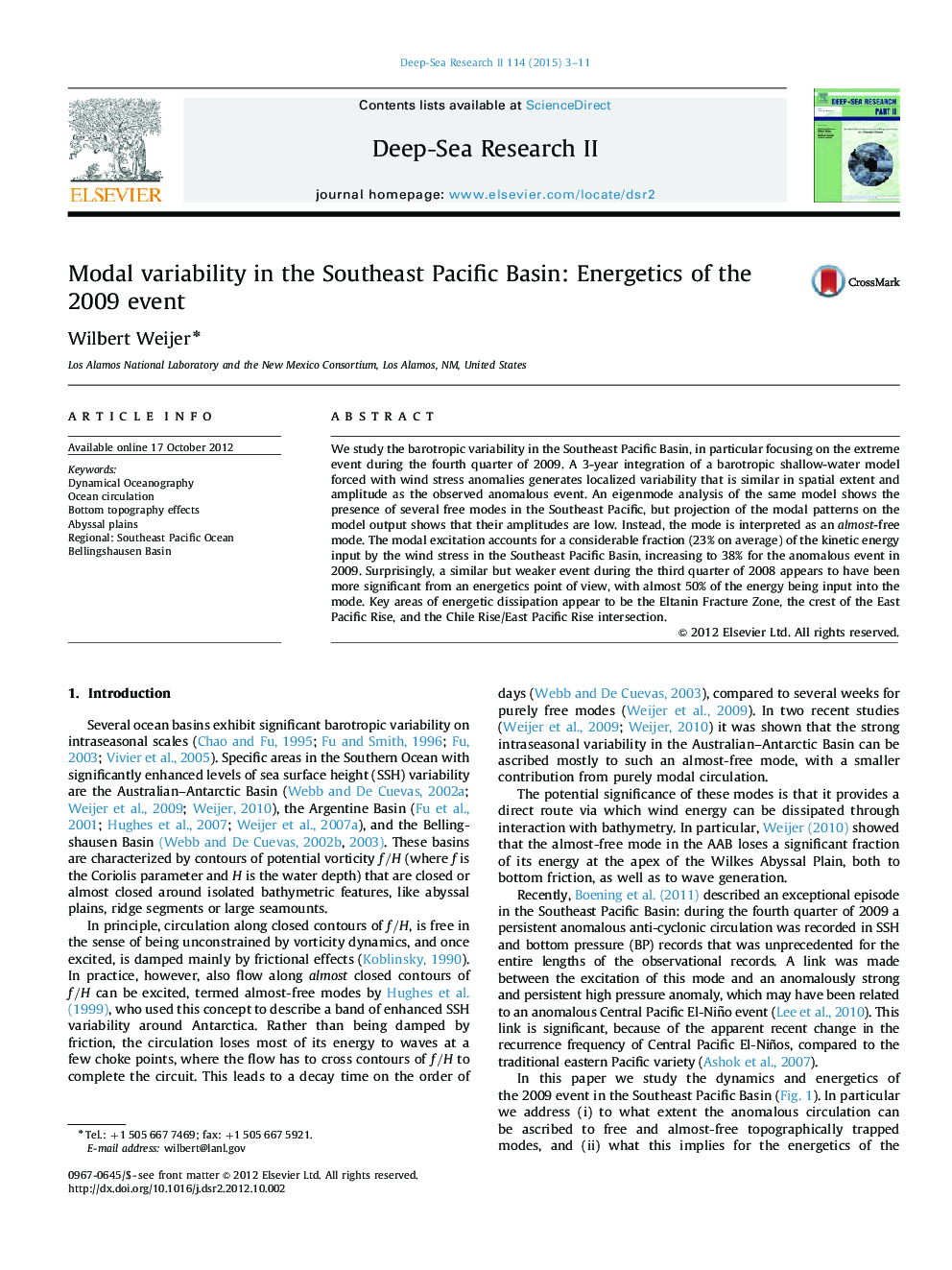| Article ID | Journal | Published Year | Pages | File Type |
|---|---|---|---|---|
| 4536265 | Deep Sea Research Part II: Topical Studies in Oceanography | 2015 | 9 Pages |
Abstract
We study the barotropic variability in the Southeast Pacific Basin, in particular focusing on the extreme event during the fourth quarter of 2009. A 3-year integration of a barotropic shallow-water model forced with wind stress anomalies generates localized variability that is similar in spatial extent and amplitude as the observed anomalous event. An eigenmode analysis of the same model shows the presence of several free modes in the Southeast Pacific, but projection of the modal patterns on the model output shows that their amplitudes are low. Instead, the mode is interpreted as an almost-free mode. The modal excitation accounts for a considerable fraction (23% on average) of the kinetic energy input by the wind stress in the Southeast Pacific Basin, increasing to 38% for the anomalous event in 2009. Surprisingly, a similar but weaker event during the third quarter of 2008 appears to have been more significant from an energetics point of view, with almost 50% of the energy being input into the mode. Key areas of energetic dissipation appear to be the Eltanin Fracture Zone, the crest of the East Pacific Rise, and the Chile Rise/East Pacific Rise intersection.
Related Topics
Physical Sciences and Engineering
Earth and Planetary Sciences
Geology
Authors
Wilbert Weijer,
